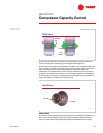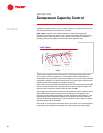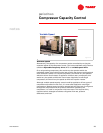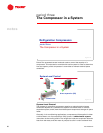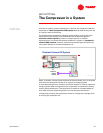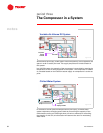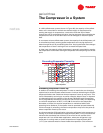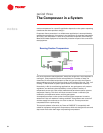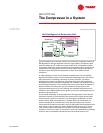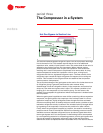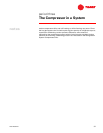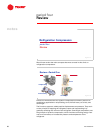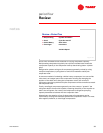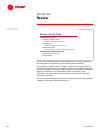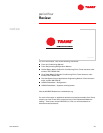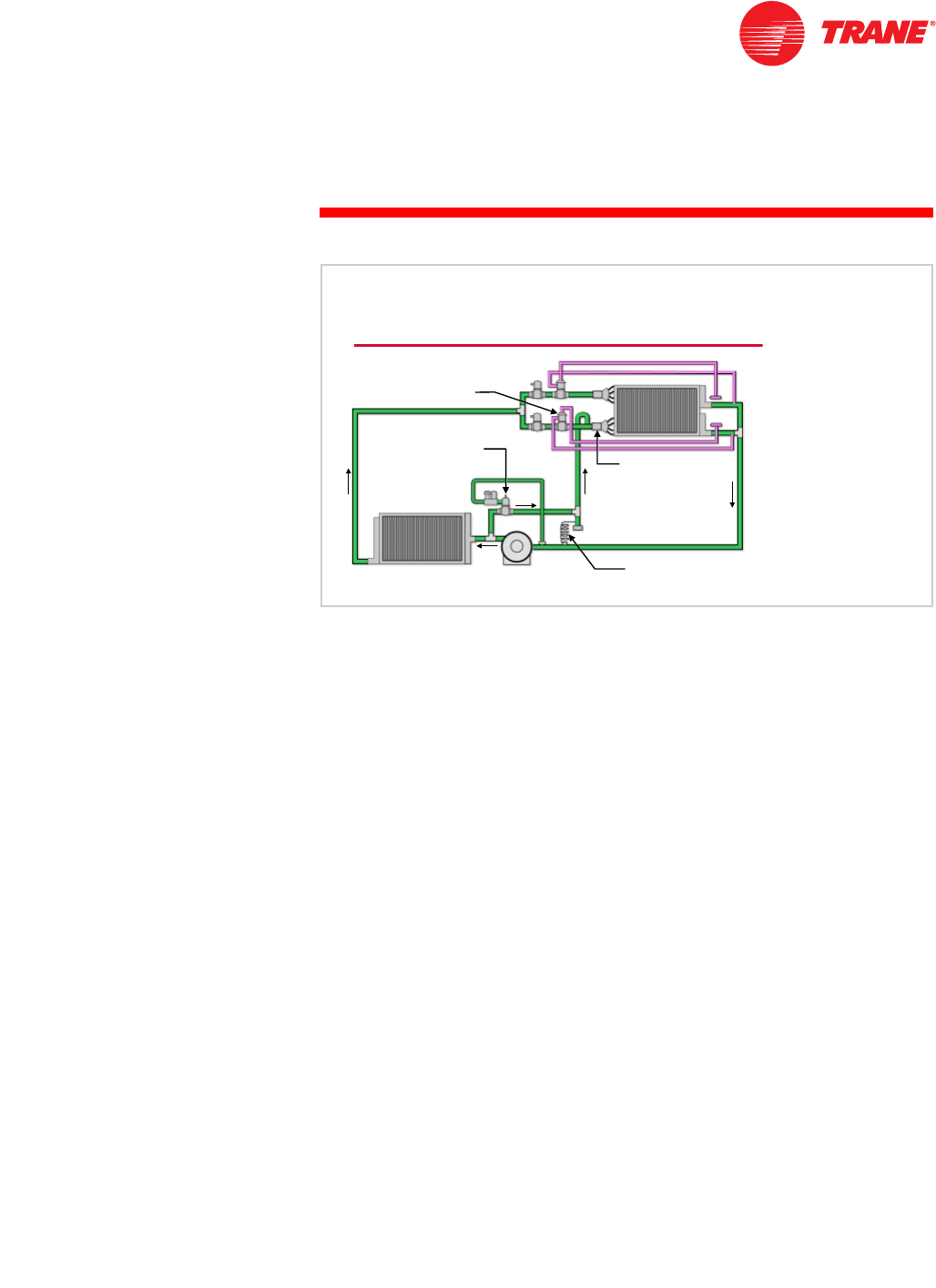
TRG-TRC004-EN 35
period three
The Compressor in a System
notes
Hot gas bypass may be another solution for preventing evaporator frosting in
DX applications. Hot gas bypass diverts hot, high-pressure refrigerant vapor
from the discharge line to the low-pressure side of the refrigeration system.
This added “false load” helps to maintain an acceptable suction pressure and
temperature. Hot gas bypass, however, fails to reduce energy consumption
because it does not allow the compressor to shut off at these low load
conditions.
In a DX application, there are two bypass methods used. The first method
bypasses refrigerant vapor from the compressor discharge line to the inlet of
the evaporator coil. Sensing a decrease in suction pressure, a pressure-
actuated valve opens to bypass hot refrigerant vapor from the compressor
discharge line to the inlet of the evaporator coil, between the expansion valve
and the liquid distributor. This increases the rate at which liquid refrigerant is
boiled off within the evaporator coil and causes the temperature of the
refrigerant leaving the coil to rise. Sensing this increased temperature, the
expansion valve feeds additional refrigerant to the coil, increasing the suction
pressure and temperature.
The principal advantage of hot gas bypass to the evaporator inlet is that the
refrigerant velocity in the evaporator and suction line is higher at low loads.
This promotes a uniform movement of oil through the evaporator coil and
suction piping. When the evaporator is located above the compressor, as
shown, the holdup of oil within the vertical hot-gas-bypass riser must be
considered. Since the flow rate within the hot-gas-bypass line modulates over a
wide range, no size of pipe can ensure adequate velocity to carry oil up the
riser. Oil will collect at the base of the vertical riser when the bypass valve
throttles to lower flow rates. This problem is commonly addressed by adding a
small oil return line between the base of the riser and the suction line.
+RW*DV%\SDVVWR(YDSRUDWRU,QOHW
HYDSRUDWRU
HYDSRUDWRU
FRQGHQVHU
FRQGHQVHU
FRPSUHVVRU
FRPSUHVVRU
KRWJDV
KRWJDV
E\SDVVYDOYH
E\SDVVYDOYH
H[SDQVLRQYDOYH
H[SDQVLRQYDOYH
GLVWULEXWRU
GLVWULEXWRU
VXFWLRQOLQH
VXFWLRQOLQH
OLTXLGOLQH
OLTXLGOLQH
RLOUHWXUQOLQH
RLOUHWXUQOLQH
Figure 49



